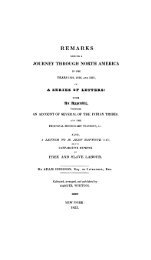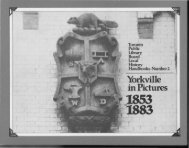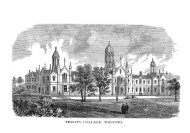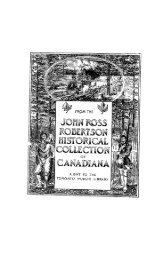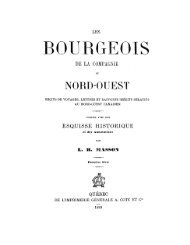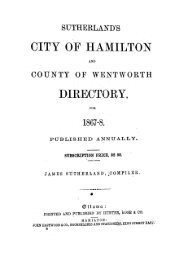alytical practical grammar - Toronto Public Library
alytical practical grammar - Toronto Public Library
alytical practical grammar - Toronto Public Library
Create successful ePaper yourself
Turn your PDF publications into a flip-book with our unique Google optimized e-Paper software.
52 ENGLISH GRAl\fMAR.<br />
2. It is more commonly restrictive, and connects its clause with the<br />
antecedent, in order to modify or restrict its meaning. Thus used, the<br />
relative with its clause is equivalent to an adjective; as, "Every thing<br />
which has life is an animal"=" Every livin~ thing is an animal." When<br />
used in this way, the relative can not be resolved into and with a personal<br />
pronoun, for we can not say, "Every thing is an animal, and it has life."<br />
268. 'Illf~ relatives who and which are used in both senses. That is<br />
used in restricti ,e, more commonly than in descriptive clauses.<br />
269. Which is sometimes used as a demonstrative adjective pronoun<br />
(303), equivalent to this or these, and qualifies or limits tbe snbstantive<br />
following it (tJ 16); as, c, Which tbiugs are an al\egory"~" These things are<br />
an al\ egory'"<br />
270. In Englisb, a relative must always be in the same sentence with<br />
itH antecedent, and, if restrictive, in close connectiou with it. In Latin,<br />
t8e relative often bas its antecedent in a preceding sentence, and connected<br />
witb it by a conjunctive term. When tbis is the case, it shfluld<br />
be reudered into English by a demoustrative, or personal pronoun. This<br />
difference of idiom should be carefully marked by classical students •• Sec<br />
Lat. Gr., 295.<br />
271. In such sentences as the followin~-" Shun such as are vicious"<br />
.. Send such as you have"-some <strong>grammar</strong>iaos consider tbe word as a<br />
relative: in tbe first example, as the nominative to are; and in the second,<br />
as the objective, governed by have. Others, more properly, regard it, in<br />
all sucb sentences, as a conjunction, and the expressions as elliptical-to<br />
be supplied thus: "Shun such as [those wboJ are vicious."-" Send such<br />
Q$ [Lbose wbicb] you have."-See Appendix IV. 248.<br />
CO"jIPOUND RELA.TII'E PROKOUXS.<br />
272. The relatives who, which, and what, with eva or soever annexed,<br />
are called compound relatives. They are used instead of the simple relative<br />
and a general or indefinite antecedent; aa, " JV!zosoever committeth<br />
sin is the servant of sin;" tbat i3, "Anyone or everyone who committeth<br />
sin," &c. .. TVhalaer is evil sbould be avoided;" tbat is, "Every thing<br />
which is evil," &c,<br />
273. Like the relative what, tbe compound relatives nre used only when<br />
the indefinite antecedent is omitted. Whenever that is expressed the<br />
eimple relative who, which, or that, should be used as in tne prec~ing<br />
examples.<br />
274. It is therefore not correct to say, eitber tbat these relatives include<br />
tbe antecedents, and so have two cases, or tbat the antecedent is understootl.<br />
Tbe snme reasoning that is applied to the relative what (266) is<br />
equally applicable to the compound relatives, only it must be remembe:'ed<br />
that the antecedent referred to in these, and to wbich one of the cases<br />
properl'y belongs, is lliways a general or indefinite term.



